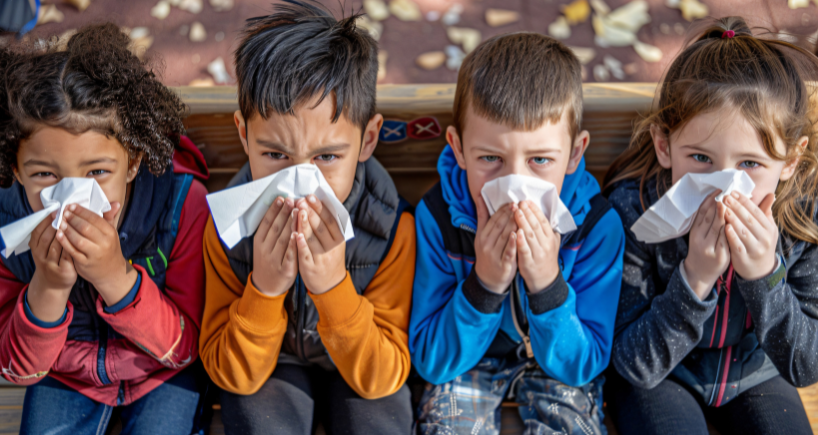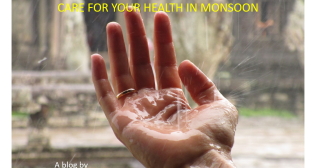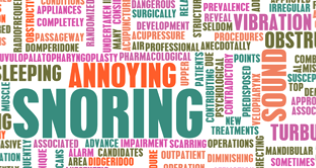
Exploring Different Types of Colds and Their Unique Symptoms
Introduction
Most of us have felt the early signs of a cold: A scratchy throat, a blocked nose, and that feeling of tiredness creeping in. Now, did you know that not all colds are the same? In fact, one can speak of different kinds of colds that have completely different effects on man. Knowledge of such differences could assist you in handling your pathogen inappropriately and even deal with it to hinder its spread.
The common cold – A familiar face
Beginning with one that many people will be familiar with, namely the common cold. This kind of cold is categorised by over 200 different viruses, with rhinovirus being the most prevalent.
Symptoms of the common cold typically include:
- Runny or stuffy nose
- Sore throat
- Mild cough
- Sneezing
- Fatigue
- Slight fever (in some cases)
Nevertheless, these symptoms may be distressing but are generally not severe and disappear within 7–10 days.
Flu – The older generation of the common cold
Many people mistake flu and cold for each other since their symptoms are almost similar. But the flu is way worse, it makes you feel a whole lot worse than that even if you are not reporting to the doctor. The common cold is accompanied by congestion, sneezing, coughing, and sore throat and is caused by the flu virus, and its symptoms are common and sudden in nature.
Here are some common symptoms that set the flu apart from the common cold:
- High fever (over 101°F or 38°C)
- Severe body aches and muscle pain
- Headaches
- Dry, persistent cough
- Extreme fatigue
- Chills
Flu may also cause such severe conditions as pneumonia, in particular, in children, adults of the same age, and individuals with immunodeficiency disorder. One should seek medical advice when thinking they have the flu, particularly if the signs get severe or fail to improve. Administering a flu vaccine annually can help you to decrease your chances of getting afflicted with the flu.
Allergic rhinitis – The cold that actually isn’t cold
Not all sniffles and sneezes mean one has caught a virus or is infected with flu. Hay fever, also called allergic rhinitis, results from exposure to substances such as pollen, dust, or animal fur. In other words, it is an autoimmune response to allergens in the environment, and although it may be a lot like having a cold, it is not.
Symptoms of allergic rhinitis include:
- Sneezing
- Itchy eyes, nose, or throat
- Runny or stuffy nose
- Watery eyes
While everyone with viral cold sneezes, sniffles, and gets sore throats, fever, and body aches, allergic rhinitis is not accompanied by any of these symptoms. It also seems to last as long as you are exposed to the allergen when used on the skin. Medications used in this condition include antihistamines and topical nasal decongestants, and the best available is probably allergen avoidance.
Sinusitis – Cold turning into something more
Sinusitis, or a sinus infection, can come on after a cold or due to many other causes, including allergies. This happens when the sinuses, the air pockets situated around your nose, become inflamed and stuffy with mucus.
Symptoms of sinusitis can include:
- Profuse, yellow or green bile engagement that comes out through the nose
- Pain pressing on the nose, eyes, and forehead or deep disagreeable sensations in those parts of the head.
- Persistent congestion
- Toothache or ear pain
- Loss of smell or a change in taste
Sinusitis may be of a chronic nature, being more than just a cold, though bacterial sinusitis needs antibiotics. However, most of the conditions clear up on their own with plenty of rest and adequate fluid intake, along with medications to relieve symptoms, such as decongestants or nasal drops.
COVID-19 – The newcomer
Starting in 2020, COVID-19 emerged as one of the prominent causes of respiratory diseases. This disease is inspired by the SARS-CoV-2 virus, and its signs are similar to those of flu and cold, but they may bring more dangerous consequences.
Common symptoms of COVID-19 include:
- Fever or chills
- Cough
- Shortness of breath
- Loss of taste or smell
- Fatigue
- Sore throat
- Congestion or runny nose
COVID-19 flu can cause mild or serious disease in the elderly or those with developed diseases. Testing is the only sure means of separating COVID-19 from other flu-like illnesses, including the common flu. Immune-boosting and adherence to health recommendations are the only ways of controlling the spread of the flu.
Chronic colds
Are you a victim of the so-called chronic cold? If you constantly feel like you are fighting a cold, you might be right. These are not precipitated by one kind of virus but could be attributed to compromised immunity, close contact with other infections, or some other ailments.
People with chronic colds often experience symptoms like:
- Constant fatigue
- Recurring sore throat
- Persistent nasal congestion
- Lingering cough
Conclusion
Even though colds still seem to occur with such frequency, having information about the types and symptoms may help one fight the sickness more adequately. For a runny nose or an itching throat, consider it a simple cold or flu, and then there is sinusitis or an allergic reaction. If you follow proper steps to address the symptoms when you have them, as well as follow several preventive measures, you will be able to recover quickly and ensure you do not spread the bug to other people.



















